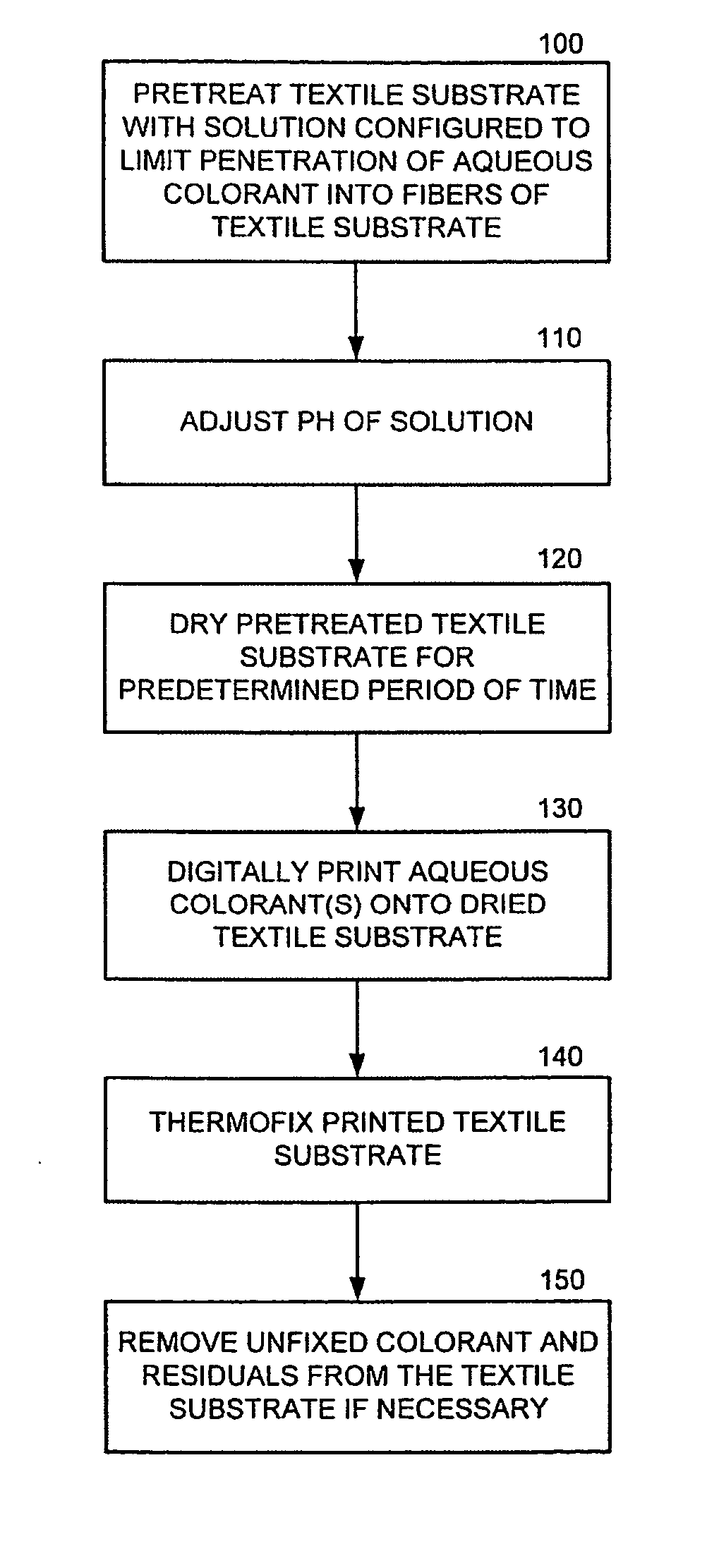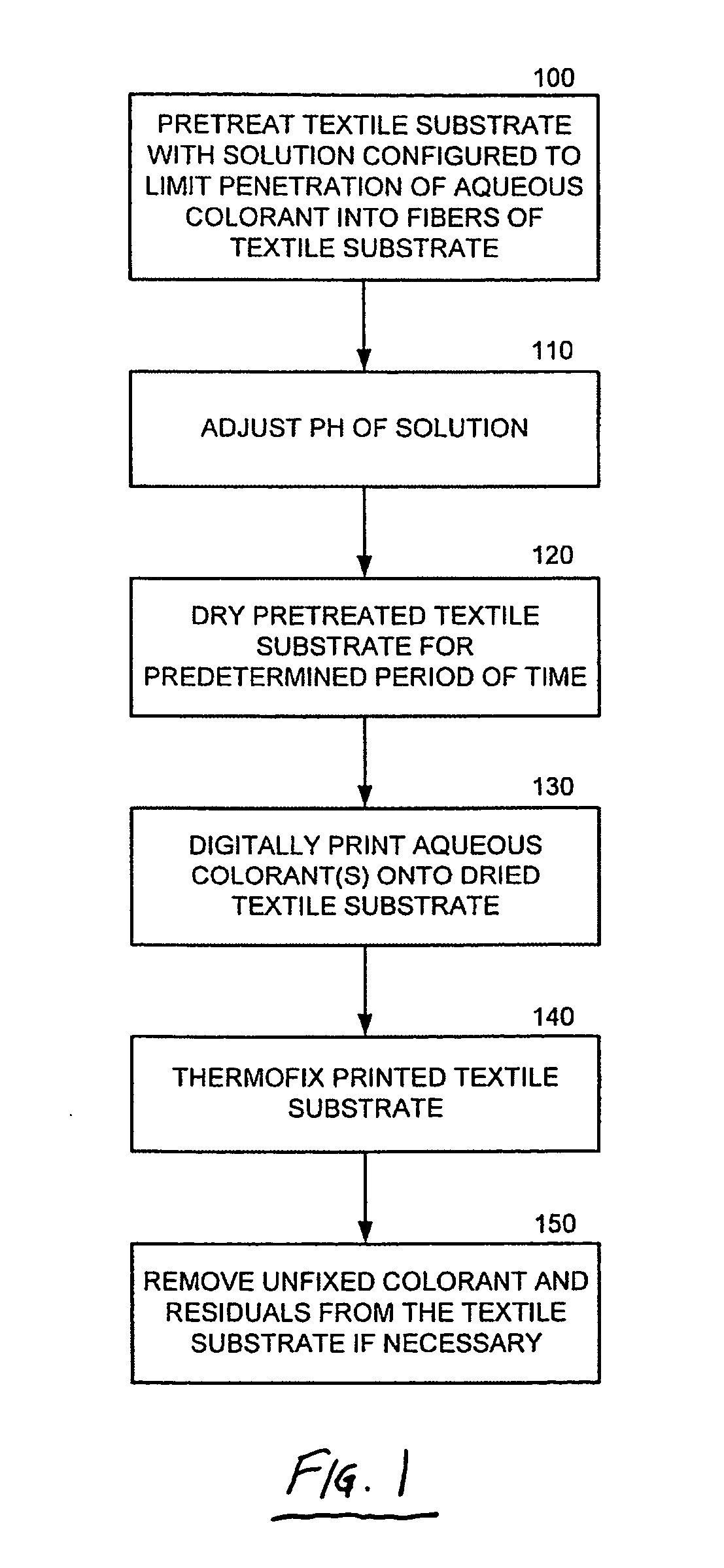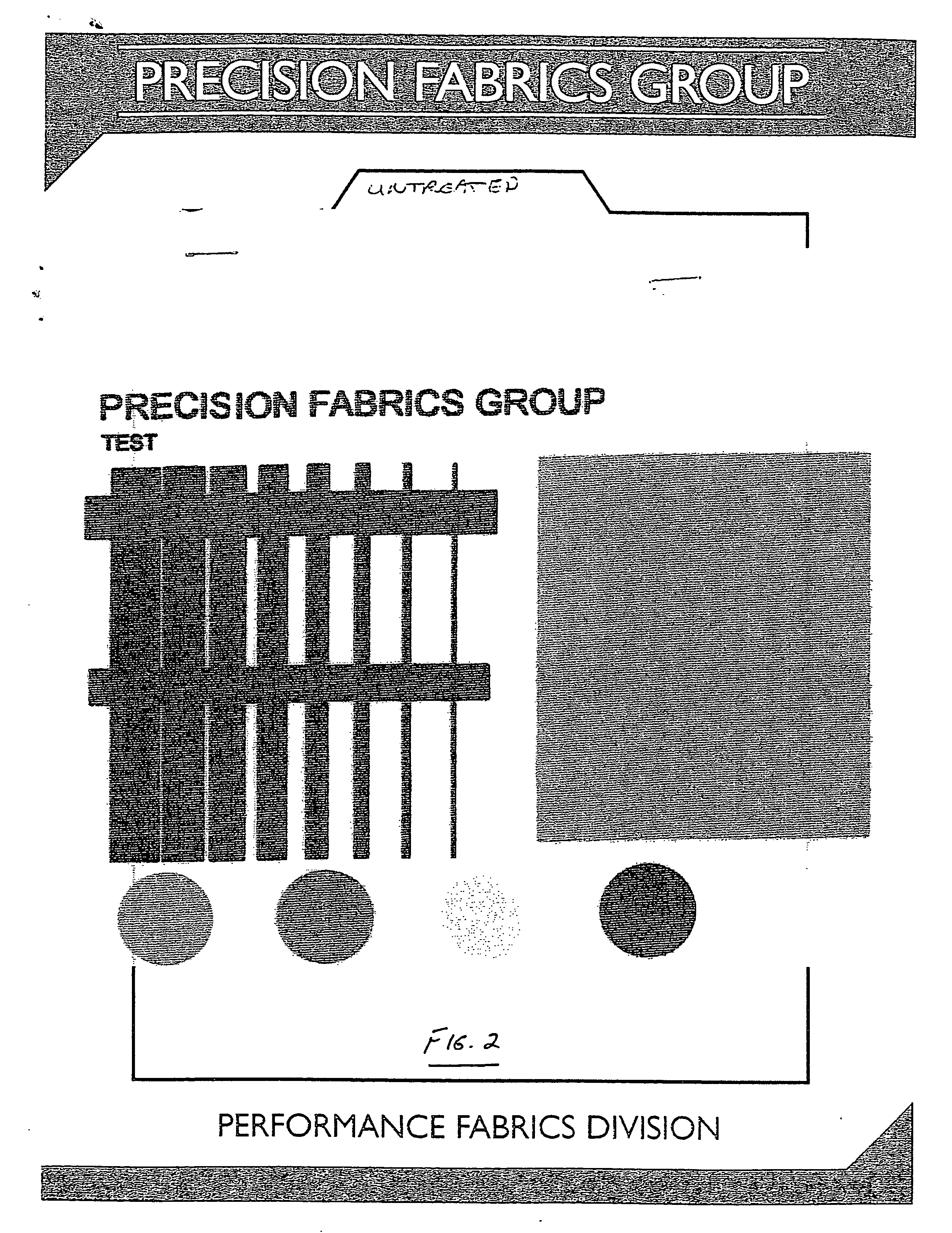Direct digital printing methods for textiles
a digital printing and textile technology, applied in the field of textiles, can solve the problems of image loss due to the underlying textile substrate, image sharpness and intensity can be negatively affected, and the flammability of flame retardant fabrics cannot be adversely affected, so as to improve the color yield and avoid the effect of flammability
- Summary
- Abstract
- Description
- Claims
- Application Information
AI Technical Summary
Benefits of technology
Problems solved by technology
Method used
Image
Examples
examples
[0029] 100% polyester fabric (2 ply 150 denier inherently flame retardant polyester in the warp and 2 ply 150 denier regular polyester in the filling) was padded with a chemical solution containing various chemicals as described in the examples below. The fabric was then dried and printed on a digital printer using disperse dyes. The fabrics were then thermofixed to develop and fix the color after which the properties of the color and fabric were tested. Additionally, the printed samples were allowed to age one and two weeks before fixing to determine if there was an effect from ageing.
examples 1-4
[0033] The same process as described in Comparative Examples 1 and 2 was carried out using 10, 20, 30 and 40 g / L of a quaternary ammonium compound (Zetasal CPT) from Zshimmer & Schwartz. The solids add on was 0.79%. No afterclear was required. The results are as follows:
Test Method:AATCCNFPA61-AATCC701-89NFPANFPA200316-Warp701-89NFPA701-AATCCIIAINDA2003ColorCharFill Char701-89898-2001WashIIAIIA90.3Light-Light-Light-YieldLengthLengthDrip WDrip FCrockCrock(Polyes-WashWashHandle-fastnessfastnessfastnessSample(%)(in)(in)(sec)(sec)(Wet)(Dry)ter)(Nylon)(Acetate)ometer20 hrs40 hrs60 hrsCompara-1005.5 6.16 004.54.553310.74.54.54.5tive Ex. 1Compara-11″ 9.75 2122.54.5552.53124.54.54.5tive Ex. 2Examples1606.08″5.17″02.34.54.552.5312554.51Examples1604.17″5.83″0164.54.552.5312.7554.52Examples1804.42″4.33″004.5452.5310.9554.53Examples1975″ 3.42″404.54.552.53.511.9554.54
[0034] Referring now to FIG. 2, an untreated textile substrate (Comparative Example 1) that has been digitally printed with ...
PUM
| Property | Measurement | Unit |
|---|---|---|
| pH | aaaaa | aaaaa |
| colors | aaaaa | aaaaa |
| color | aaaaa | aaaaa |
Abstract
Description
Claims
Application Information
 Login to View More
Login to View More - R&D
- Intellectual Property
- Life Sciences
- Materials
- Tech Scout
- Unparalleled Data Quality
- Higher Quality Content
- 60% Fewer Hallucinations
Browse by: Latest US Patents, China's latest patents, Technical Efficacy Thesaurus, Application Domain, Technology Topic, Popular Technical Reports.
© 2025 PatSnap. All rights reserved.Legal|Privacy policy|Modern Slavery Act Transparency Statement|Sitemap|About US| Contact US: help@patsnap.com



